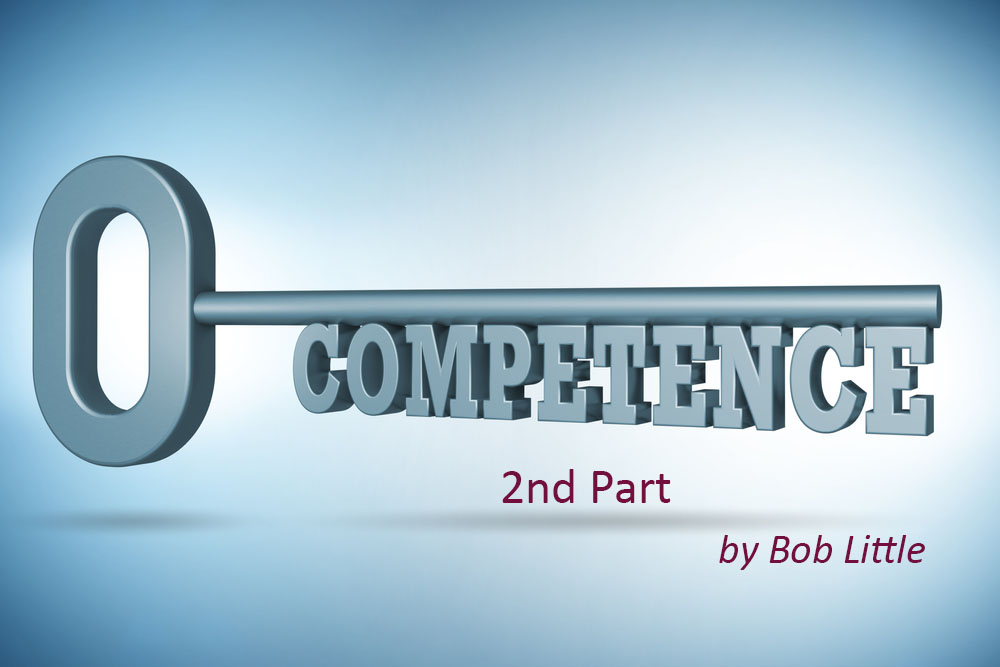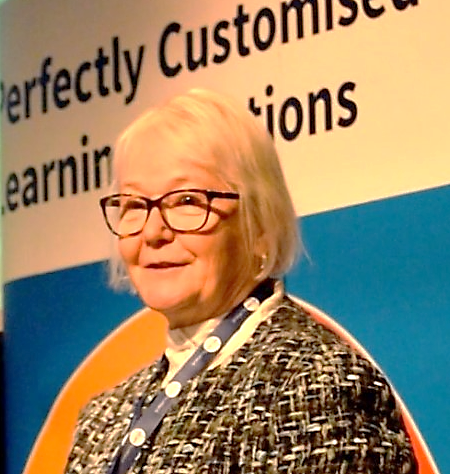Having seen (in “Getting Evidence of Competency”) why using competency management offers great benefits for modern organisations, touched on a vocabulary for discussing 12 factors that support competencies, and explored processes to gather the evidence needed to support competency management, we can now turn to the competency framework itself.

Uncovering the agreed evidence that demonstrates meeting minimum standards should be neither complex nor cumbersome, believes Linda Steedman, Chair of eCom Learning Solutions, one of the UK’s leading digital learning and assessment specialists. One key step in this is to take – and agree – a view on job roles, recruiting, professional development and stages in professional or academic attainment.
“While those who decide the valid level of competence required don’t need to understand the entire process, they need to sign-off on the minimum level of evidence acceptable,” Linda explained. “This doesn’t need to be a perfect measurement. It merely needs to be sufficient to make a reliable decision and effect the necessary changes over time. So, taking each role in turn, create an action plan.”

“While those who decide the valid level of competence required don’t need to understand the entire process, they need to sign-off on the minimum level of evidence acceptable,” Linda explained. “This doesn’t need to be a perfect measurement. It merely needs to be sufficient to make a reliable decision and effect the necessary changes over time. So, taking each role in turn, create an action plan.”
To do so, you must:
• Know what you’re measuring
• Know the evidence you expect
• Write the tasks to accumulate the evidence
• Amalgamate the tasks into competency definitions
(statements) and competency frameworks
Frameworks of competency definitions can vary – from a few tens of specific definitions to hundreds of definitions with extremely detailed requirements. Linda argues that neither approach is necessarily “wrong” but, whichever approach you take, it’s essential – for the framework to be adopted – that it’s the “right fit” for the organisation. If you’re using a competency management system that can pull frameworks from registers, ensure you have the capability to omit some items and add your own. You should also remember to base your competency framework needs only on evidence that, in all practicality, can be collected.
“Just because you see other organisations – such as large Government departments including, say, the US Department of Labor, having 384 statements for a job role doesn’t mean you have to apply all these in your organisation too,” said Linda. “This is especially true if any of these statements don’t result in a performance improvement. Many of the statements will not be relevant for your purpose.
“To help you determine the statements that will be relevant to your organisation’s job roles, there are several open registers of competency frameworks available. You can search these and find a basis from which to start.”
Clarity is king. So, Linda advises, pilot your framework of competency definitions with a group of subject matter experts who already exceed the minimum required standard. This will highlight any concerns in understanding what’s required and provide you with feedback on areas for improvement. This is essential because, once things are “out in the wild”, understanding terms and expectations can be misconstrued. So, tackle any possible misunderstandings and misinterpretations at a very early stage.
Linda stresses that, “Creating the competency management process can find people trying to create something that will last, unaltered, for many years. So, they aim for scale. This is often where problems arise. Experience shows it’s best to start small and be prepared to add-on or scale-up over time. Competency management should be a living process, engaging in continual and constant improvement. Like any other quality process, it must be reviewed, expanded or adapted as required. Scale will come naturally. So, it’s a sensible strategy to get started with pilots rather than wait for a big transition.”
In Linda’s view, from all the thinking, questioning, and experimenting as well as evidence-gathering, you should now have an agreed understanding of what’s to be achieved. This needs to be shared across your organisation to help others understand the scope of the competency process. From the boardroom and senior team to the individual contributors, the process must be agreed with people who have influence.
In Linda’s view, it helps if you determine:
• What’s the key driver for applying competency management?
• How’s the organisation expecting to achieve it?
• Who’re the champions who are going to support the people?
• Who’re all the people involved in this process and what evidence are
they able to achieve in their day-to-day role?
• What kind of reporting will be useful to track evidence and
improvement?
Leaders in organisations may see how competency management will bring improvements and provide confidence in capability but they need to know that it’s worth the effort. To convince them, Linda believes, you must:
• Show why building a culture of competency should be a part of your
performance improvement strategy.
• Explain strategies and tips to help identify evidence.
• Generate activities to build an environment of competency and drive
behaviour change.
• Adopt an integrated learning and performance approach to transform
and enhance your current performance delivery model.
Importantly:
• Organisation performance will fail to improve if the workforce doesn’t contain people who’ll champion the cause of competence.
• Competency management will help you measure culture change and organizational improvement.
• Avoid the disconnect between competency definitions and a demonstration of organisational activities.
• Stop competency being merely a tick-box exercise.
• The whole competency management issue is complicated by the appearance of new skills that people need to master.
In Linda’s view, “While many leaders believe their organisations use competency processes as useful tools, those organisations’ behaviour reflects the opposite. This is because these processes overwhelm the staff involved with frameworks requiring hundreds of tasks to be evidenced in minute detail. By contrast, the most effective way to instil a culture of competency is to integrate it as part of a comprehensive recruitment, learning and training strategy. Additionally, any learning or training must be presented in an engaging and immersive format and designed to achieve the required change in thinking or action, as well as creating the evidence that matters.”
Author biography

Bob Little PR’s Specialist Re-imaginer, Bob Little is a UK-based writer, commentator and publicist, specializing in the corporate learning industry. Introduced to the corporate online learning technologies industry in May 1990, Bob now works globally. He advises organizations, including the digital learning and assessment specialist, eCom Learning Solutions, which creates solutions aimed at increasing learning engagement and driving productivity to help organizat
